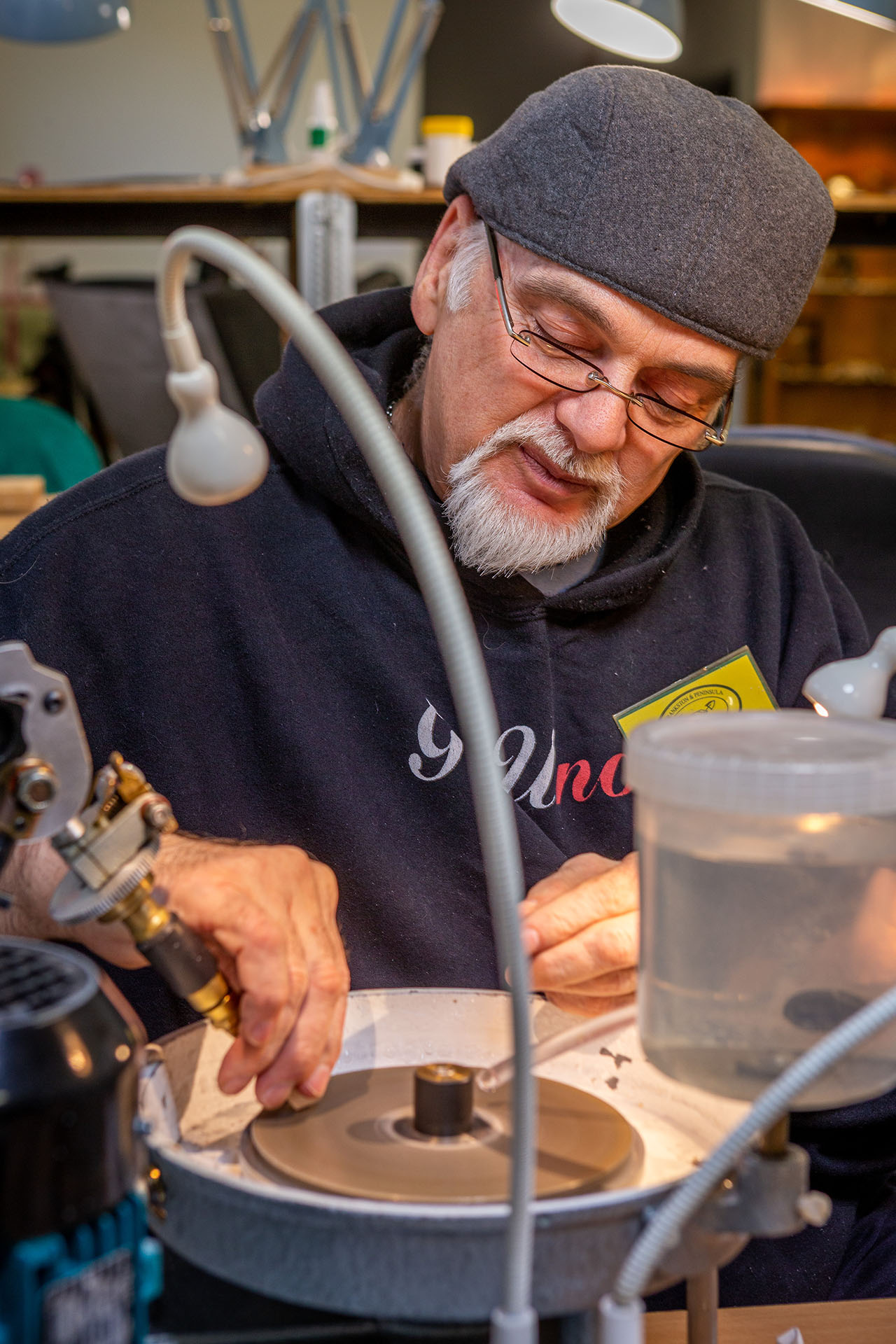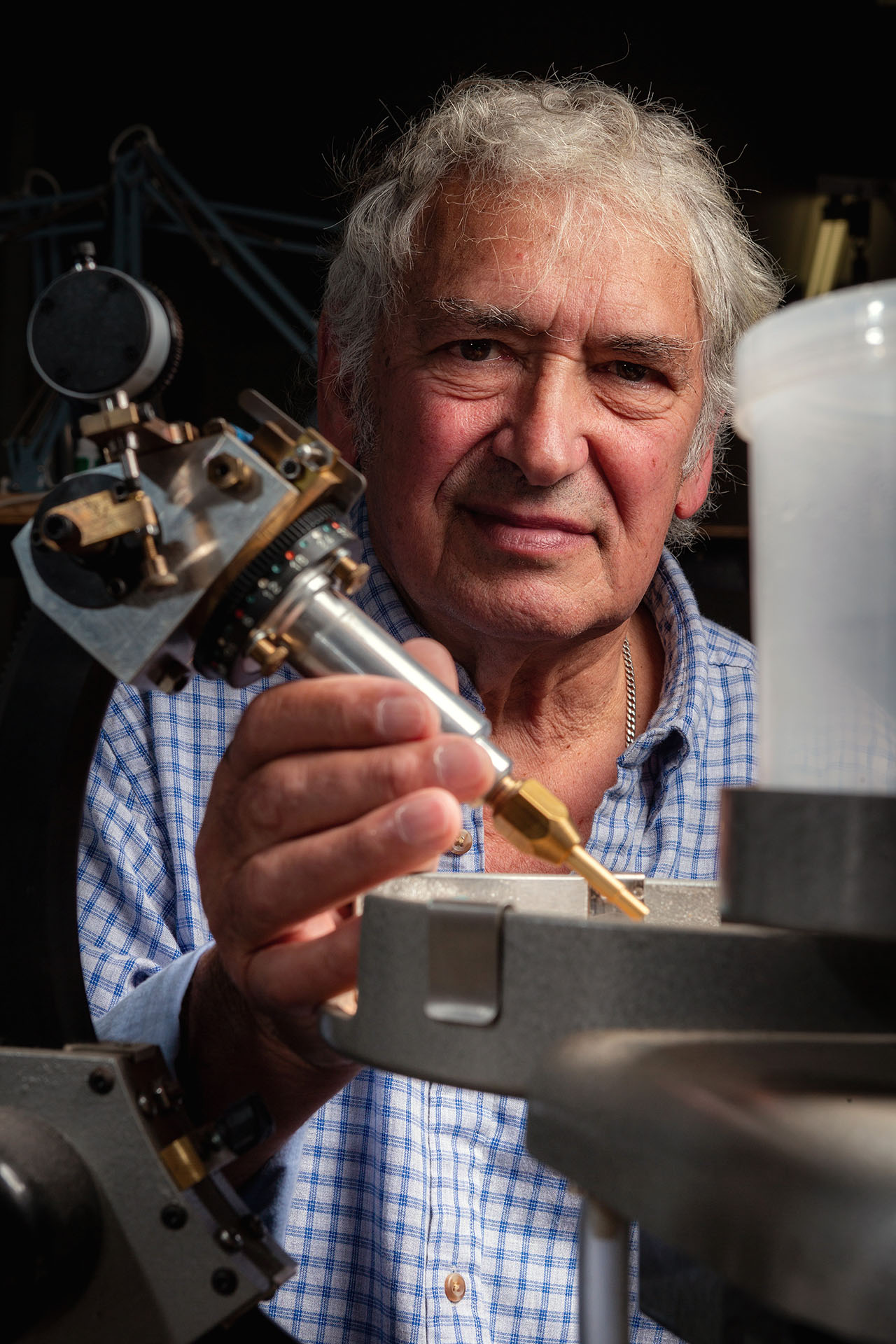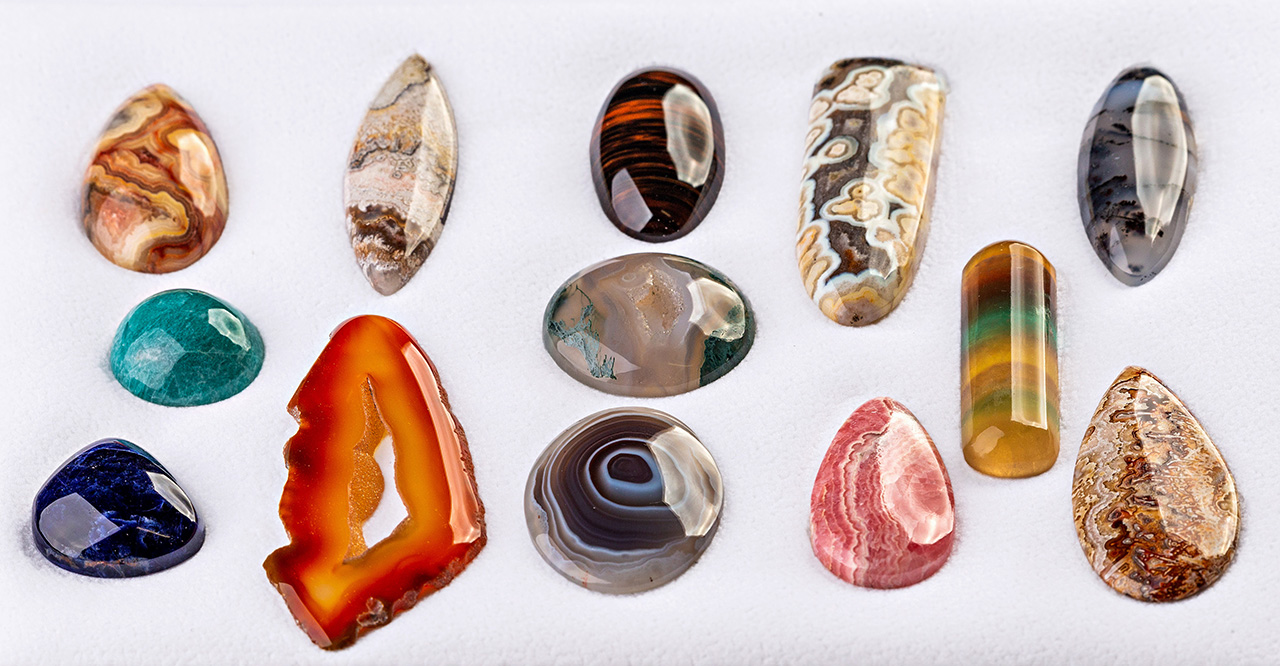
By Cameron McCullough Photos Gary Sissons & supplied
Just after 6pm on 17 November 2021, the alert was raised. A fire had broken out in the vicinity of McClelland Drive in Langwarrin. A large plume of smoke could be seen in the distance as volunteer firefighters rushed to the scene and brought the fire under control. Nobody was hurt in the fire, but the clubrooms of the Frankston and Peninsula Lapidary Club had been destroyed. Burned to the ground. Everything lost.
Lapidary is the art of cutting or polishing stones, gems and fossils, and is one of mankind’s most ancient and revered artforms. Lustrous, brilliant, subtle or colourful precious and semi-precious stones have obsessed people since the dawn of time with the earliest known lapidary work likely occurring during the Stone Age.
Egyptians are credited with developing the cutting and jewellery fashioning methods for lapis lazuli, turquoise, and amethyst.
Interested in this ancient artform of processing earth’s raw materials and making them shine, the Frankston and Peninsula Lapidary Club was established in 1966. The club began with a meeting of enthusiasts gathered at the Mechanics Hall in Frankston. From there they held monthly meetings with talks and demonstrations on lapidary, as well as working with stone and jewellery making.
The club grew and small clubrooms were soon established. Over the ensuing years the club continued to grow and needed a more substantial home. This was to come in the form of a permanent home on the grounds of McClelland Gallery, which was officially opened by Dame Elisabeth Murdoch on 28 February 1982.
The club continued to grow and an extension was added in 1998, again opened by Dame Elisabeth. Over the ensuing years the club, through hard work and fundraising, accumulated the expensive equipment required. It’s membership blossomed to over a hundred, and a collection of minerals and art was proudly on display in the clubrooms.
Then the fire destroyed everything.
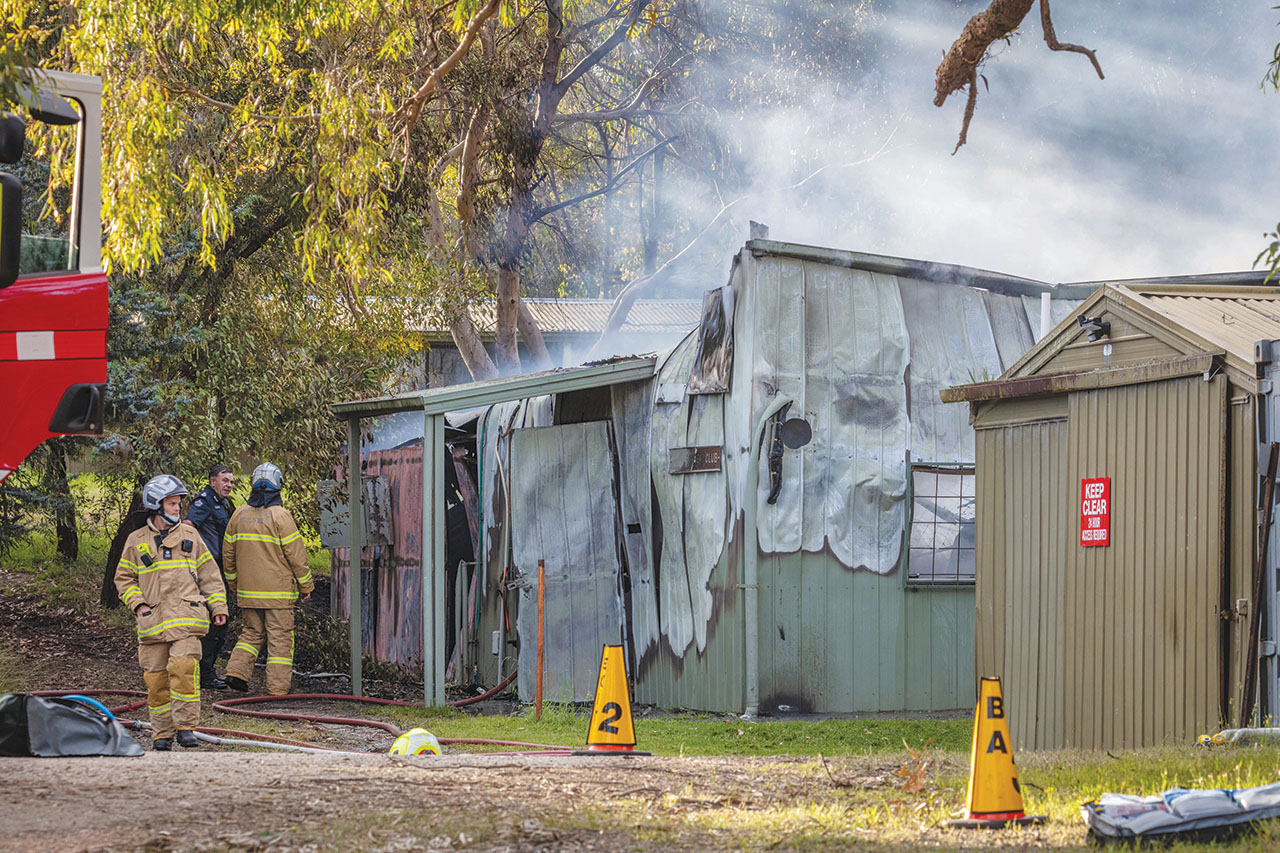
Fire completely destroys the clubrooms in 2021
But the club wasn’t just about a building, as necessary as that was. It wasn’t just about the equipment, as expensive as it was. It wasn’t just about the finished product, as beautiful as it was. It was something else.
At its core, the club was about people. A sense of community. It was over half a century of field trips to search for gems and fossils. There were the newsletters and competitions. There were all the meetings and demonstrations. There was shared knowledge and a willingness to help. There were friendships and lifelong bonds.
Only 17 months after losing everything, on 30 April this year, the club moved into shiny new clubrooms with the help of Frankston City Council.
“We feel this is a wonderful new chapter for our club and are very grateful for the support of Frankston City Council and the many others that helped us get into new clubrooms,” said the club’s president, Jo Kedstrom.
“We are looking forward to a bright future and would encourage anyone with an interest in lapidary to get involved.”
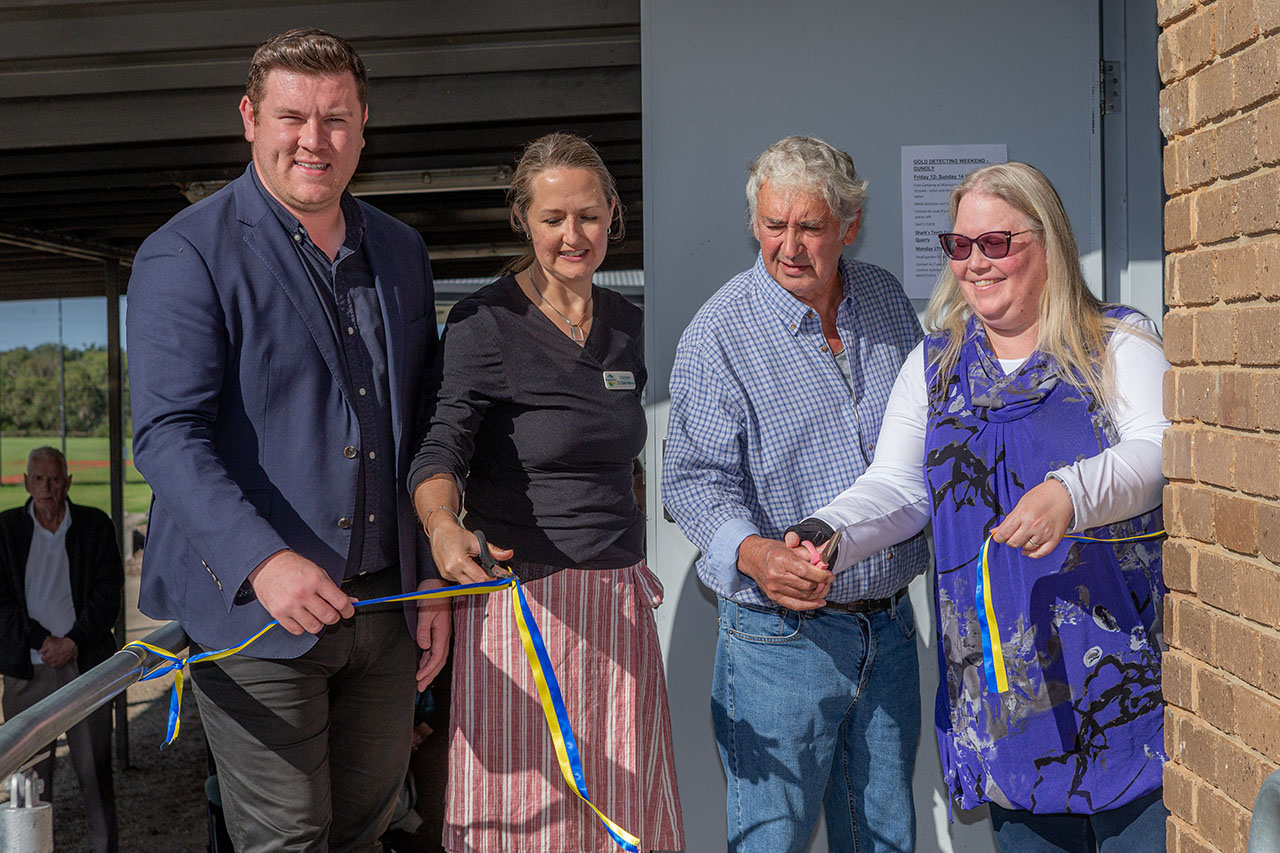
Opening the new clubrooms on 30 April 2023
The process starts with gathering samples to work with. A “miners right” is required in Victoria to fossick. If you don’t want to search independently, you can go on field trips with the club. You can also buy stones at their club rooms, or at their annual gem show.
Experienced volunteer teachers are available at the club, happy to teach their craft because they enjoy sharing their knowledge and giving back to the community.
“You can process the stones and specimens in a variety of ways and enjoying seeing them through their progression from raw materials into beautiful, finished products,” said Jo.
Lapidary is a fun and rewarding way to deal with the riches that nature has to offer
“You can cut, shape, and polish a cabochon (a gem that has been polished but not facetted). The finished products can be set into pendants, rings, earrings, or any other thing of your own creation.”
“You can learn to facet crystals such as sapphire, garnet and smoky quartz. You can learn to silversmith, wire wrapping and chain maille to create your own jewellery.”
Lapidary is a multi-facetted experience. It is about being out in nature and the hunt for that perfect specimen. It is about visualising a finished product. It is about patience and a willingness to learn. It is about making something beautiful.
The natural environment is filled with colours and textures that lend themselves to lapidary. From amethyst, rose quartz, opals, volcanic stones, petrified wood, and a variety of marble which sometimes has little fossils in it.
“Nature presents so much to us in so many shapes, sizes and colours,” said Jo.
“Lapidary is a fun and rewarding way to deal with the riches that nature has to offer, creating beauty from it, all the while socialising with a great group of people from all ages and backgrounds.”
The Frankston and Peninsula Lapidary Club has a gem show on Saturday 26 and Sunday 27 August at the Peninsula Community Theatre in Wilsons Road, Mornington.
The club meets a few times a week for classes and independent work once you finish your course. Please visit their website for more information.
